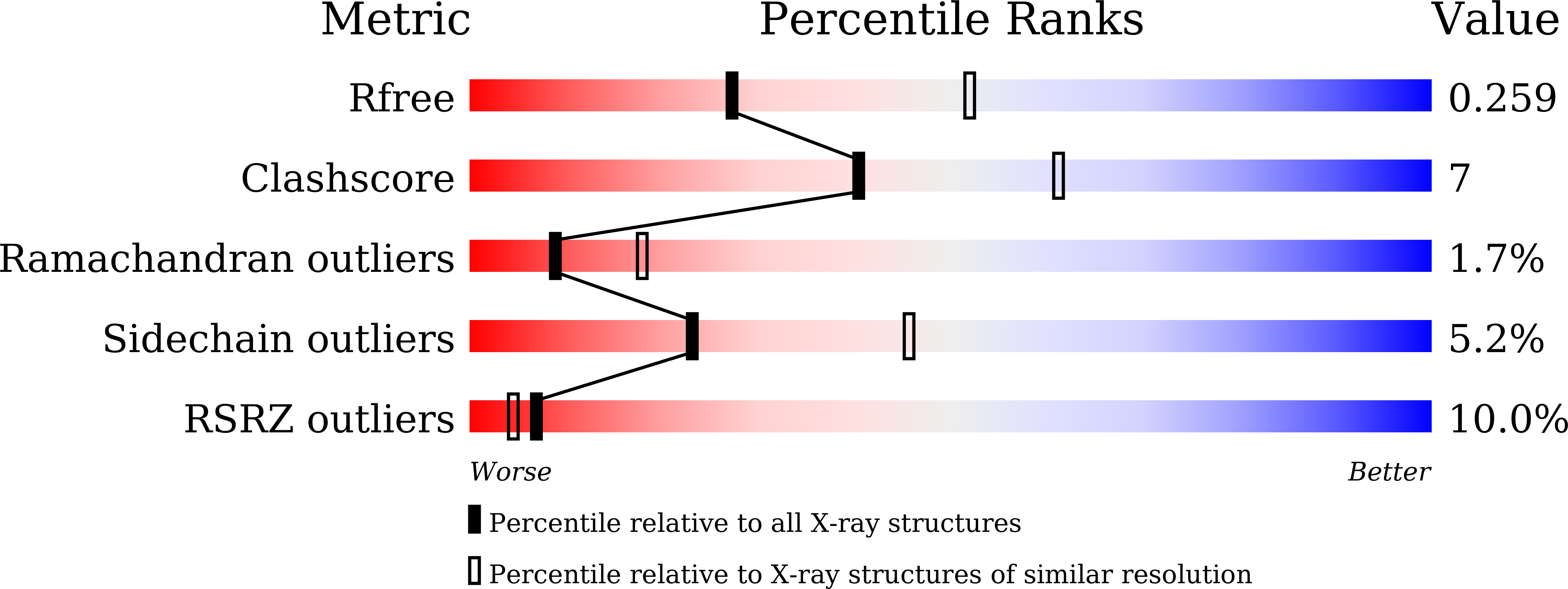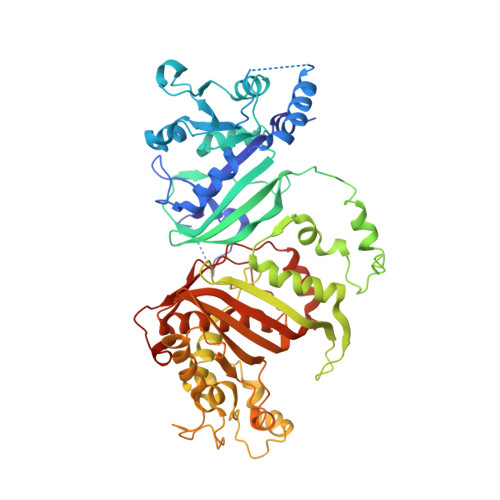Flexible diaminodihydrotriazine inhibitors of Plasmodium falciparum dihydrofolate reductase: Binding strengths, modes of binding and their antimalarial activities.
Kamchonwongpaisan, S., Charoensetakul, N., Srisuwannaket, C., Taweechai, S., Rattanajak, R., Vanichtanankul, J., Vitsupakorn, D., Arwon, U., Thongpanchang, C., Tarnchompoo, B., Vilaivan, T., Yuthavong, Y.(2020) Eur J Med Chem 195: 112263-112263
- PubMed: 32294614
- DOI: https://doi.org/10.1016/j.ejmech.2020.112263
- Primary Citation of Related Structures:
6LEU, 6LEV, 6LEZ, 6LH9, 6LHI, 6LHJ - PubMed Abstract:
A series of flexible diaminodihydrotriazines or cycloguanil (Cyc) analogues are developed and shown to inhibit P.?falciparum dihydrofolate reductase (PfDHFR) of the wild type or those carrying either single (S108N), double (C59R?+?S108N and A16V?+?S108T), triple (N51I?+?C59R?+?S108N and C59R?+?S108N?+?I164L) or quadruple (N51I?+?C59R?+?S108N?+?I164L) mutations, responsible for antifolate resistance. The flexibility of the side chain at position N 1 has been included in the design so as to avoid unfavourable steric interaction with the side chain of residue 108 of the resistant mutants. The inhibition constants of many inhibitors for the mutant enzymes are in the low nanomolar region. Regaining of drug binding efficacies was achieved with both A16V and S108N series of mutants. X-ray studies of some enzyme-inhibitor complexes designed for optimal interaction with the mutant enzymes reveal the modes of binding in line with the K i values. A number of these compounds show excellent antimalarial activities against resistant P.?falciparum bearing the mutant enzymes, and exhibit low cytotoxicity to mammalian cells, making them good candidates for further development as antimalarial drugs.
Organizational Affiliation:
National Center for Genetic Engineering and Biotechnology (BIOTEC), National Science and Technology Development Agency, Pathum Thani, 12120, Thailand. Electronic address: sumaleek@biotec.or.th.



















